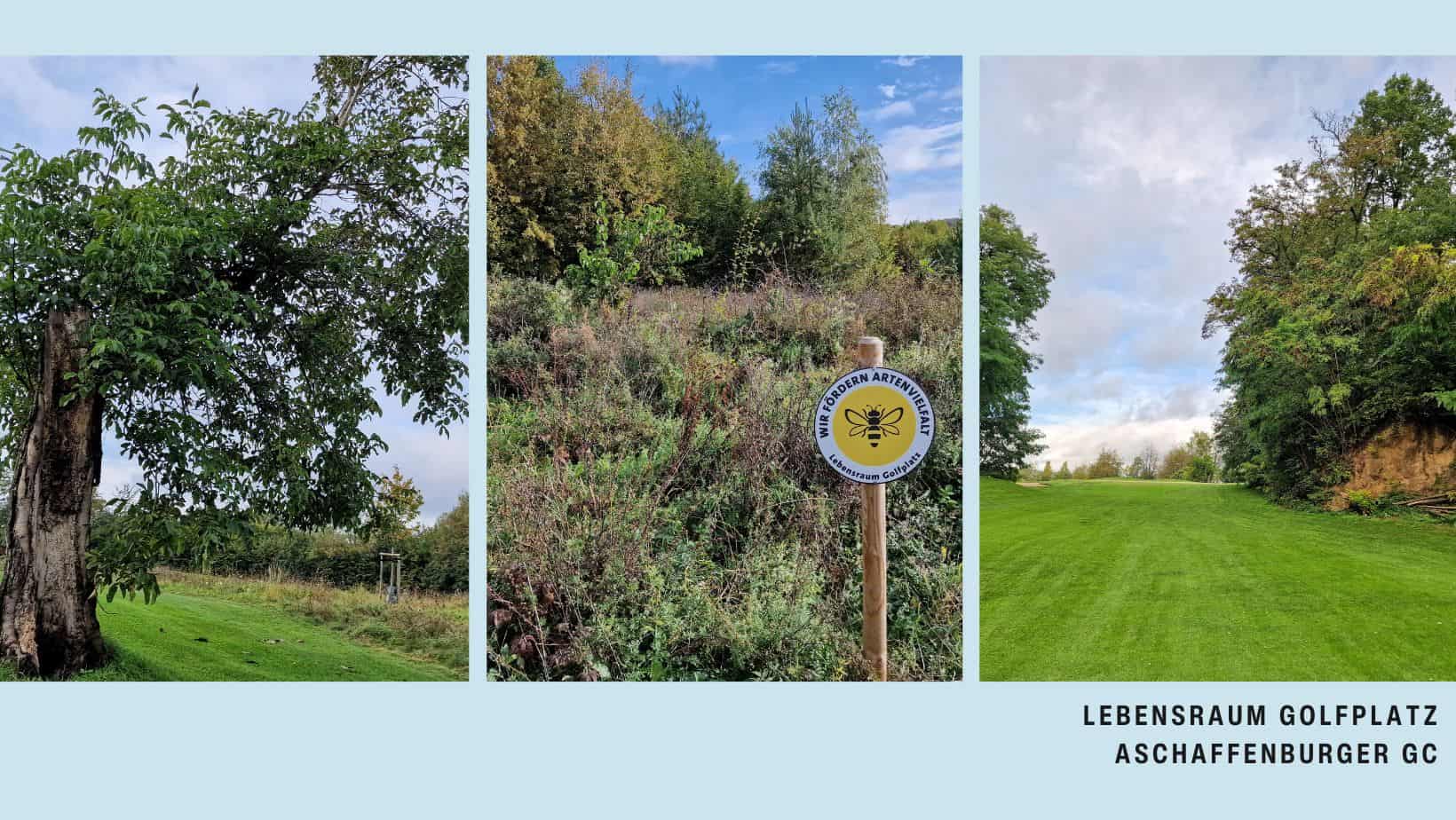Aschaffenburg GC: Traditional club creates habitats
“The topic is forward-looking, no question about it”, Boris Kopsch, club manager of the Aschaffenburg GC, looks over lhole 1 of the traditional club in the Hessian Golf Association and talks about the Lebensraum Golfplatz project. “We really wanted to take part in the campaign because we will have to deal more with environmental and nature conservation issues in the future anyway. This was a good opportunity.”
With 55 hectares of land, 18 holes plus a short course and a traditionally run registered club, the Aschaffenburg GC is struggling with similar issues to numerous other courses in Germany: limited staff, tight budgets, increasing environmental and water regulations from the authorities, plus climate change with all its problems such as heavy rain and drought. So the key question is: what projects can a club actually implement when it comes to the golf course habitat and the promotion of biodiversity?
“We definitely have a lot of potential to implement something and are now in the process of taking it in hand,” Kopsch states resolutely. After the first visit by an environmental expert from the Hessian Golf Association, he looks with satisfaction at the numerous rough areas along fairways and greens, which now serve as a habitat for small animals and insects. Every now and then a dead tree lies between the grasses as deadwood. The days when the golf course at the Aschaffenburg GC presented itself as a purely mowed area of uniform green are over. The important extensive areas are usually only mowed once a year, and many areas with their grasses, flowers and herbs are also left standing over winter to provide overwintering habitats.
Apple harvest as a member campaign
Old orchard trees are an essential visual feature of the golf course in the Vorspessart. They leave their mark on many a course, must be given the right care and are also used by the club for collecting and juice recycling activities. “Get the most out of it” was the motto of the apple harvest, which was a success. It is precisely here that members can be inspired for the golf course habitat project, says Kopsch. Awareness of the joint campaign by the Hessian Golf Association and the Hessian Ministry of the Environment has also been raised by means of numerous logo boards, which now draw attention to the importance of the golf course for biodiversity in sensitive areas. Insect hotels were set up and bird nesting boxes were hung up. And a beekeeper is now also active on the site with two beehives.
For wild bees and other insects, the large sandy edges on the right-hand side of lane 12 are particularly attractive. “We actually leave these areas completely alone and only intervene if the safety of the players is at risk,” explains Kopsch. In fact, the natural slope areas are a great retreat for flora and fauna and make the already attractive course a highlight of the round.
The GC in Aschaffenburg has plenty of projects for the future. Water management is also an important topic in this club, which we want to work on in the long term. The reduction of irrigated areas through the introduction of larger Hardrough areas has already promoted the reduction of water extraction. The increasingly dry periods in the Hesse region have also ensured that awareness of the issue of water is growing among the club’s 1000 or so members. Participation in the “Habitat Golf Course” project underlines the fact that the Aschaffenburg GC will continue to address environmental issues in the future. “The project has definitely increased motivation.”








